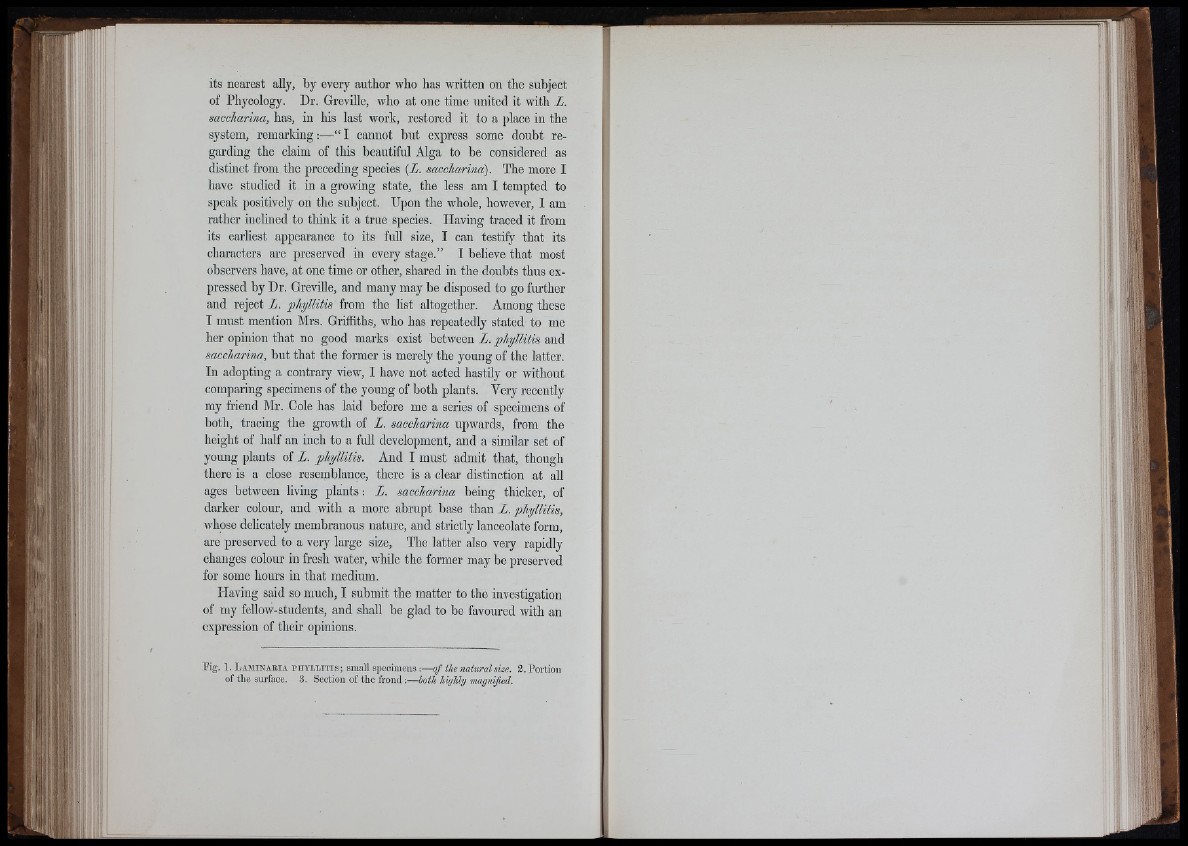
Vll
fol i'
* ;til :
I f t'
f o r
its nearest aUy, by every author who has written on the subject
of Phycology. Dr. Greville, who at one time united it with L.
saccharina, has, in his last work, restored it to a plaee in the
system, remarking:—“ I cannot but express some doubt regarding
the claim of this beautiful Alga to be considered as
distinct from the preceding species (Z. saccharina). The more I
have studied it in a growing state, the less am I tempted to
speak positively on the subject. Upon the whole, however, I am
rather inclined to think it a true species. Having traced it from
its earliest appearance to its full size, I can testify that its
characters are preserved in every stage.” I believe that most
observers have, at one time or other, shared in the doubts thus expressed
by Dr. Greville, and many may be disposed to go further
and reject L. phyllitis from the list altogether. Among these
I must mention Mrs. Griifiths, who has repeatedly stated to me
her opinion that no good marks exist between L. phyllitis and
saccharina, but that the former is merely the young of the latter.
In adopting a contrary view, I have not acted hastily or without
comparing specimens of the young of both plants. Very recently
my friend Mr. Cole has laid before me a series of specimens of
both, tracing the growth of L. saccharina upwards, from the
height of half an inch to a full development, and a similar set of
young plants of L. phyllitis. And I must admit that, though
there is a close resemblance, there is a clear distinction at all
ages between living plants: L. saccharina being thicker, of
darker colour, and with a more abrupt base than L. phyllitis,
whose delicately membranous nature, and strictly lanceolate form,
are preserved to a very large size. The latter also very rapidly
changes colour in fresh water, while the former may be preserved
for some hours in that medium.
Having said so much, I submit the matter to the investigation
of my fellow-students, and shall be glad to be favoured with an
expression of their opinions.
Fig. 1. L aminaeia ph y l l it is ; small specimens -.— of the natural size. 3. Portion
of the suiface. 3. Section of the frond:— both highly magnified.
'9 I S I
,fi r
I i: